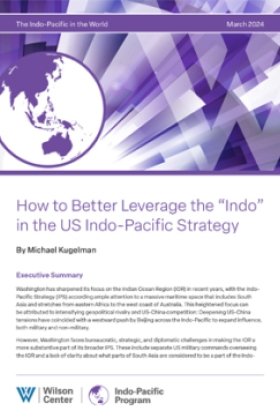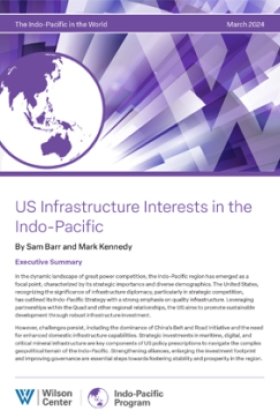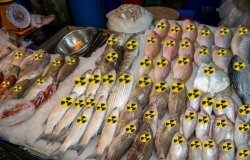Implementation of Biogas Digestion to Clean up China's Livestock Industry and Provide Rural Energy
This research brief was produced as part of the China Environment Forum's partnership with Western Kentucky University on the USAID-supported China Environmental Health Project
In the village of Cang Dong in northern Hainan Island, a local pig farm that came under pressure by the surrounding community decided to implement an environmentally friendly model of rural development that could revolutionize the industrial livestock industry in China. In 1998, the pig farm was created to try to boost Cang Dong's dormant economy. The farm's 10,000 pigs released 250 tons of untreated waste into the local environment every month, drowning the nearby village with the stench of pig excrement and severely contaminating the water supply. Given an ultimatum from the local government to clean up or be forced to close, the pig farm decided to integrate biogas technology with a wastewater treatment plant—generating enough biogas to not only power the farm, but to pipe gas to the fulfill energy needs of 107 households of the village. [1] In 2005, manure accounted for an estimated 3 percent of methane emissions in China. However, enteric fermentation, or the methane released from the digestion systems of ruminant farm animals, was the greatest source of methane emissions at 30 percent. [2] Few biogas digesters are able to tap enteric fermentation for biogas at this time, but it is clearly an area for future research and collaboration. However, as the livestock industry in China expands and intensifies, more creative solutions like this one are needed to complement sustainable development.
The Growing Need for Biogas Digesters
As people's incomes increase, their demand for former luxury products, such as meat, dairy and eggs have also skyrocketed. Specifically, meat consumption quadrupled from 13.4 kg per person in 1980 to 53 kg in 2004. [3] China has nearly a quarter of the world's population, but only 7 percent of the arable land and a quarter of the per capita freshwater resources. Inevitably, for China to supply the 200 percent increase in per capita meat consumption, concentrated animal feeding operations (CAFOs)—or large-scale livestock farms—have been encouraged by both central and local governments. [4] The farm animal concentration in China was so high in 2003 that the 4 percent of China's pig farms producing 50 or more pigs per annum were responsible for supplying 28 percent of the country's total pork output. [5] CAFOs are very efficient, but they create food safety and environmental health issues such as disease and chemical pollutants, and they generate greenhouse gases and mountains of solid waste. In rural areas, CAFOs compete with crop production and small industries for scarce resources such as water and energy, and divert farming away from human food production to animal feed production. (For more information on the negative environmental effects of CAFOs, see "Surf and Turf" in CES 9).
Biogas technology was first employed in China at the end of the nineteenth century, gaining popularity in fits and starts in the early twentieth century, and again in the 1960s and 1970s. While biogas power systems currently only account for a little over 100 MW in China, and are used mainly for cooking, lighting, and heating by individual farm households, the development of eco-agricultural systems that incorporate large-scale biogas production and animal farming is becoming a greater priority of the government. In 2003, the government announced the 2003-2010 National Rural Biogas Construction Plan, which proposed to increase biogas use from 9 million households in 2003 to a total of 20 million households by 2005. Similarly, the government also allotted 35 billion Yuan in the 10th Five-Year Plan [2001-2005] to promote an ecological biogas model in rural areas. The investment helped to develop 2,200 biogas engineering projects that used wastes from intensive animal husbandry and poultry, treating more than 60 million tons of manure a year. [6]
Benefits of Biogas Digestion
Biogas digestion could be an important component of modernizing China's agriculture industry by promoting meat production while simultaneously protecting the environment, improving human health, and increasing the use of renewable energy—potentially even to those off-grid who are most in need of it. In theory, the total annual production of manure in China could generate around 130 billion cubic meters of methane—equivalent to the methane emissions of 93 million tons of coal. [7] The leftover effluent from the anaerobic digestion process can also be used by farmers as a safe organic fertilizer.
A study of greenhouse gas production from anaerobic livestock wastewater treatment processes in Taiwan determined that on pig farms the annual emissions per head of methane, carbon dioxide, and nitrous oxide were 0.768 kg, 0.714 kg, and 0.002 kg, respectively. [8] These numbers may seem small, but in 2006 there were an estimated 678 million pigs in China. Methane alone could contribute approximately 15 to 17 percent of the greenhouse effect over the next 50 years. Even though there is more CO2 in the atmosphere, methane's longevity and high infrared absorption properties means it contributes about one-sixth of the net greenhouse effect. [9] Thus, industrial livestock farming has a huge impact on global climate change when the animal waste is not properly treated.
Meixian is a county in Guangdong Province in southern China that suffers from three chronic problems that plague similar rural areas in China—shortages of energy, lack of organic fertilizer, and environmental degradation. To understand the potential impact of biogas in alleviating these problems, researchers carried out a survey of seven family farms in Meixian, five of which employed the "livestock-biogas-fruit-system." [10] In each of the five farms, a biogas digester of 8 cubic meters was fueled by agricultural and animal wastes, supplying biogas to the household as fuel, and leftover sludge for use as an organic fertilizer for fruit trees. Prior to building the digesters, all of the families used either coal or liquefied petroleum gas (LPG) for cooking. In remote rural areas of Meixian County, these fossil fuels are scarce and costly. After building the digester, the households were no longer using coal or LPG for domestic purposes. In 1994, when this study was done, it cost about 800 Yuan to build an 8 m3 digester that could last about 15 years. The cost of coal was 0.30 Yuan/kg in 1994, thus costing the average family about 803 Yuan of coal per year, and 12,045 Yuan for 15 years, which by far exceeded the initial fixed cost of building the digester.
International Initiatives to Increase Biogas in China
While smaller biogas projects are immensely beneficial to rural communities, financing rural energy projects is always challenging. Difficulties with distribution drive up marginal coast, and since consumption is lower, the fixed costs end up being divided between fewer units of energy sold. [11] However, international organizations have overcome these complications, and loaned or invested funds into agricultural waste management projects in China.
One of the most prominent projects is the Efficient Utilization of Agricultural Wastes Project (implemented from 2003-2008) funded in part by the Asian Development Bank. This project aims to promote widespread adoption of biogas-based renewable energy systems in rural areas of Henan, Hubei, Jiangxi, and Shanxi provinces. In total, the project aims to complete 4,700 greenhouses with small biogas digesters for farmers (Type I), 10,900 smaller scale orchard plantations with biogas digesters (Type II), 14 medium-scale biogas plants localized in large commercial pig farms (Type III), and 28 medium-scale straw biomass gasification plants (Type IV). Each of the Type III biogas plants will be able to supply up to 120 households and the central pig farm with biogas for lighting and cooking. Additionally, the organic manure will be sold to adjacent farms. In Henan, Hubei and Shanxi, these Type III biogas systems can generate about 1.2 million m3 of biogas, which can provide energy to raise 96,830 pigs (9,683 tons of pork). Moreover, the biogas production can produce about 246,500 tons of digested effluents and sludge annually. [12]
Another organization that has implemented projects in China on livestock waste management is the Food and Agriculture Organization's (FAO) Livestock, Environment and Development (LEAD) initiative. One of their projects is Waste Management of Intensive Livestock Production (China, Mexico, Thailand and Vietnam), which endeavors to use an Area-Wide Integration (AWI) to develop technologies and policy instruments. Under the principles of AWI, crops and livestock activities are integrated naturally rather than being merely an element of industrial production. AWI serves as a framework for concentrating on food security, poverty alleviation, resource integrity, public health, and environmental protection. The project, which was conducted in Jiangsu Province, began in February 2000 and was finished in March 2001. [13] Jiangsu Province is a prime example of a booming and expanding livestock industry, with a reported 15,871,232 pigs produced in 1996, and a further 5 percent increase in pig production from 1995-1998. [14] In Jiangsu, there are 450 biogas plants, 100 of them medium/large-scale, and the rest in households, all of which using both solid and liquid manure for biogas production. The biggest biogas digesters use a 700 m3 pond. While recycling of manure in the digesters is considered a favorable ecological cycle, problems of economic feasibility and stable technology still remain. [15]
Another example of a growing prioritization of livestock biogas issues, the Chinese government is also a partner in the Methane to Markets (M2M) initiative that "advances cost-effective, near-term methane recovery and use as a clean energy source." M2M was one of many international organizations that helped shape China's 2005 Renewable Energy Law. The law provides for a feed-in tariff for renewable technologies and established grid feed-in requirements, as well as established cost-sharing mechanisms that evenly distributed the incremental cost of new energy sources among utility users—all crucial components to promote livestock biogas projects in the Chinese countryside. Currently, M2M is working to establish an agricultural research network to assess the current animal waste management practices used in China across all livestock groups (swine, cattle, sheep and poultry) and identify the major production regions. Following this study, M2M plans to develop a market synopsis on where and how methane emissions from these sources can be reduced and how much energy could be produced. Other initiatives include informational workshops and capacity building initiatives to expand methane recovery projects, particularly in western provinces. [16]
The Future of Biogas in China
Nationally, approximately 80 percent of electricity in China is supplied by coal; however, small hydroelectric plants and other renewables have played an integral role in providing power to rural areas. The benefits of rural electrification by renewable sources include contributions to the local economy, ecological and environmental protection, promotion of industrialization and urbanization, enhancement of agricultural production, and an improvement in rural welfare. [17] In applicable areas, biogas digestion can replace the role that small hydropower plants have played and provide similar mutual benefits.
The income and development gap between China's rural and urban populations is continuing to widen, although the Chinese government has emphasized the need to end this trend with the new "socialist countryside" schemes of the latest Five-Year Plan. In addition to safely providing energy and disposing of mass animal waste, biogas digesters present an opportunity to specifically address many of the problems plaguing the countryside, such as supplying safe fertilizer. Currently, China, like much of the world, relies heavily on nitrogen-based fertilizers, which are produced from petroleum. These fertilizers deplete the quality of soil over years of reuse in a way that organic fertilizer does not. Additionally, over-applied nitrogen-based fertilizers are a major contributor to eutrophication and algae blooms in China, such as the 2007 Lake Tai blooms. Human health problems stemming from excess pesticide residues on food and in waterways is also a growing concern in China. [18]
Second, biogas digesters can be designed on a variety of scales to meet the needs of off-grid and on-grid consumers. On a small-scale family farm, biogas can provide safe energy for cooking and light in remote areas, addressing indoor air pollution (IAP) derived from poor quality coal that kills hundreds of thousands in China every year. (See CEHP research brief on IAP). Traditional biomass burning stoves that many rural residents still use release harmful smoke into dwellings and waste a lot of energy, as their typical efficiency rate is 5-8 percent. [19] On a larger scale, biogas digesters can power whole communities like the Cang Dong example cited in the introduction to this brief. Notably, many of the large-scale CAFOs are currently located in peri-urban areas where biogas generators would primarily benefit on-grid, urban dwellers.
The waste that fuels biogas digesters is already physically at hand and presents a greater environmental health threat when left untreated. Efforts to encourage household biogas development alone are not adequate, for biogas can only be used for cooking or lighting purposes and not for heating. Moreover, for an individual family, a biogas digester can only provide benefits contingent on how many pigs they have. In the case of livestock farms, agricultural wastes are not in low supply, and the number of pigs is consistently very high. Despite some limitations—such as the current location of most large animal farms—biogas has the potential to become a vital component in China's energy portfolio.
Fan Feng was a spring 2008 China Environment Forum research intern and she is a working on her Bachelor's in International Economics at Georgetown University. She can be reached at: ff36@Georgetown.edu. Kimberly Go and Ma Tianjie—summer 2008 research interns—assisted in the editing of this brief.
1 Greenhouse, Ben. 2006. "A New Model for Chinese Rural Development? Industrial Agriculture and Renewable Energy in Rural China." China Environment Series 8: 134-137
2 (2006). USEPA Report: Global Anthropogenic Non-CO2 Greenhouse Gas. [Online]. Available.
3 Xiong, Lei. "China Needs a New Type of Livestock Revolution." WorldWatch Institute [Updated 12 December 2006; cited 6 March 2008]. [Online]. Available.
4 Ellis, L., and Turner, J.. 2007. "Surf and Turf: Environmental and Food Safety Concerns of China's Aquaculture and Animal Husbandry." China Environment Series 9: 19-40
5 Li, Peter J. (2005, December 12). "China's animal farming industry: Current state and future directions."
A Compassion in World Farming Trust and Humane Society International-sponsored Report.
6 Li, Kangmin. "Biogas China." Institute of Science in Society. Press Release 10 February 2006. [Online]. Available.
7 Asian Development Bank. (2002, September). Report and Recommendation of the President to the Board of Directors on a Proposed Loan to the Efficient Utilization of Agricultural Wastes Project. [Online]. Available.
8 Su, J.J., B.Y. Liu, and Y.C. Chang. 2003. "Emission of greenhouse gas from livestock waste and wastewater treatment in Taiwan." Agriculture, Ecosystems and Environment 95: 253-263
9 Ibid.
10 Chen, Rongjun. 1997. "Livestock-biogas-fruit systems in South China." Ecological Engineering 8: 19-29
11 Zerriffi, Hisham. Interview by Fan Feng. Email. Washington, DC., 14 March 2008. Assistant Professor, Ivan Head South/North Research Chair, Liu Institute for Global Issues
12 Asian Development Bank. (2002, September).
13 Fang, Y., J.S. Yang, S.S. Kjaer, P. Gerber, B.S. Ke, and H. Menzi. (2000). "Area-wide integration of specialized livestock and crop production in Jiangsu Province, China." Proc. 9th Workshop of the RAMIRAN Network, Gargnano, Italy, September 6-9 2000
14 Food and Agriculture Organization. (2001, January). Elements of Spatial Analysis Related to the Area Wide Integration Projects in Jiangsu (China) First Results. Livestock, Environment and Development Initiative. [Online]. Available.
15 Kjaer, Soren S. (2001). Proposal for Environmental Policy Options for Intensive Livestock Farms. The Case of Jiangsu Province, PRC. FAO/Livestock, Environment and Development Initiative.
16 Methane to Markets: Agriculture. [Online]. Available.
17 Pan, J., W. Peng, M. Li, X. Wu, L. Wan, H. Zerriffi, D. Victor, B. Elias, and C. Zhang. (2006). "Rural Electrification in China 1950-2004." The Program on Energy and Sustainable Development, Stanford University. [Online]. Available.
18 Ellis, Linden & Jennifer L. Turner. (2008, Forthcoming). Sowing the Seeds: Opportunities for U.S.-China Cooperation on Food Safety.
19 Gan, Lin. "Rethinking China's bioenergy future." chinadialogue. [Online]. Available.
About the Author
Fan Feng
Read More
China Environment Forum
Since 1997, the China Environment Forum's mission has been to forge US-China cooperation on energy, environment, and sustainable development challenges. We play a unique nonpartisan role in creating multi-stakeholder dialogues around these issues. Read more










